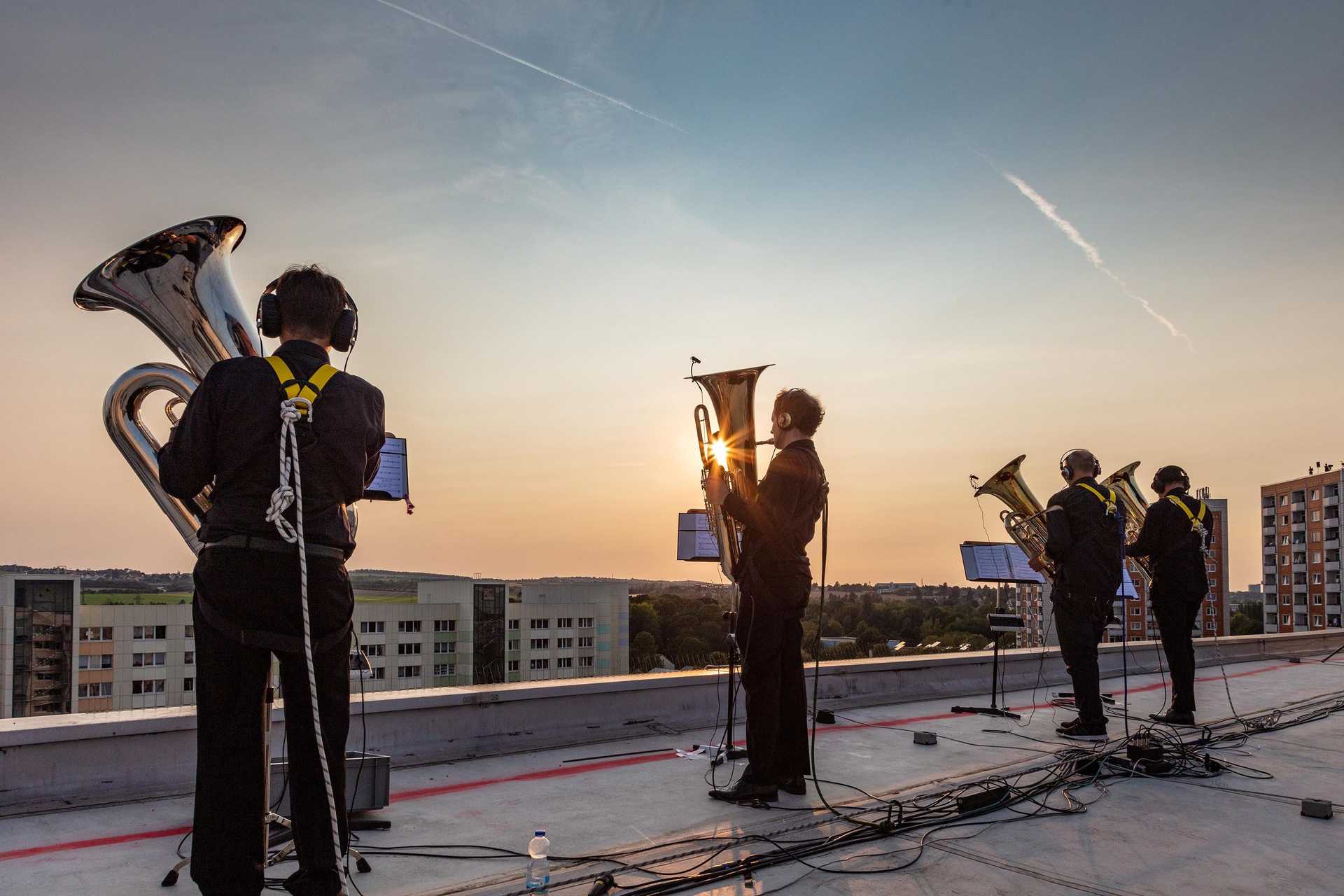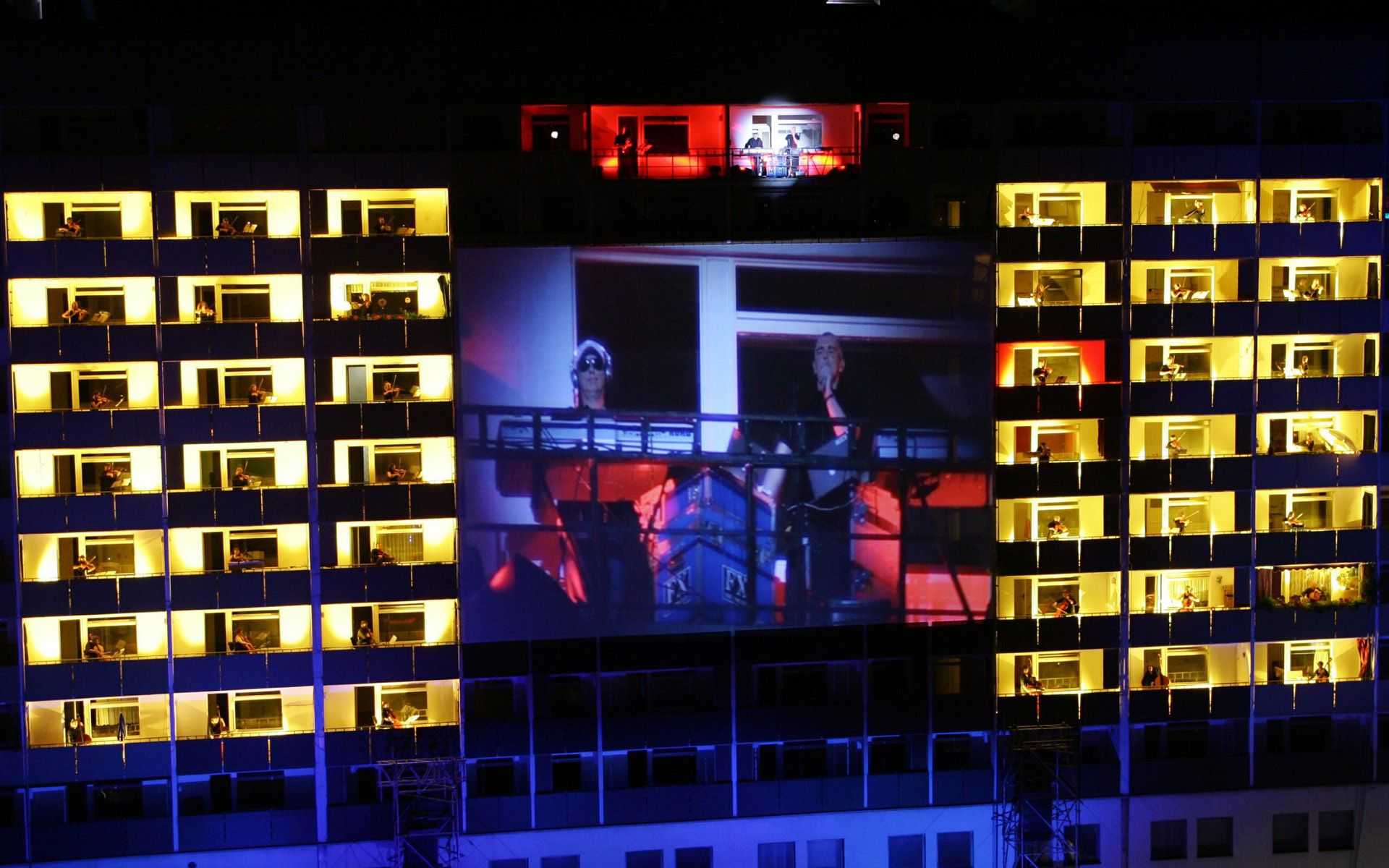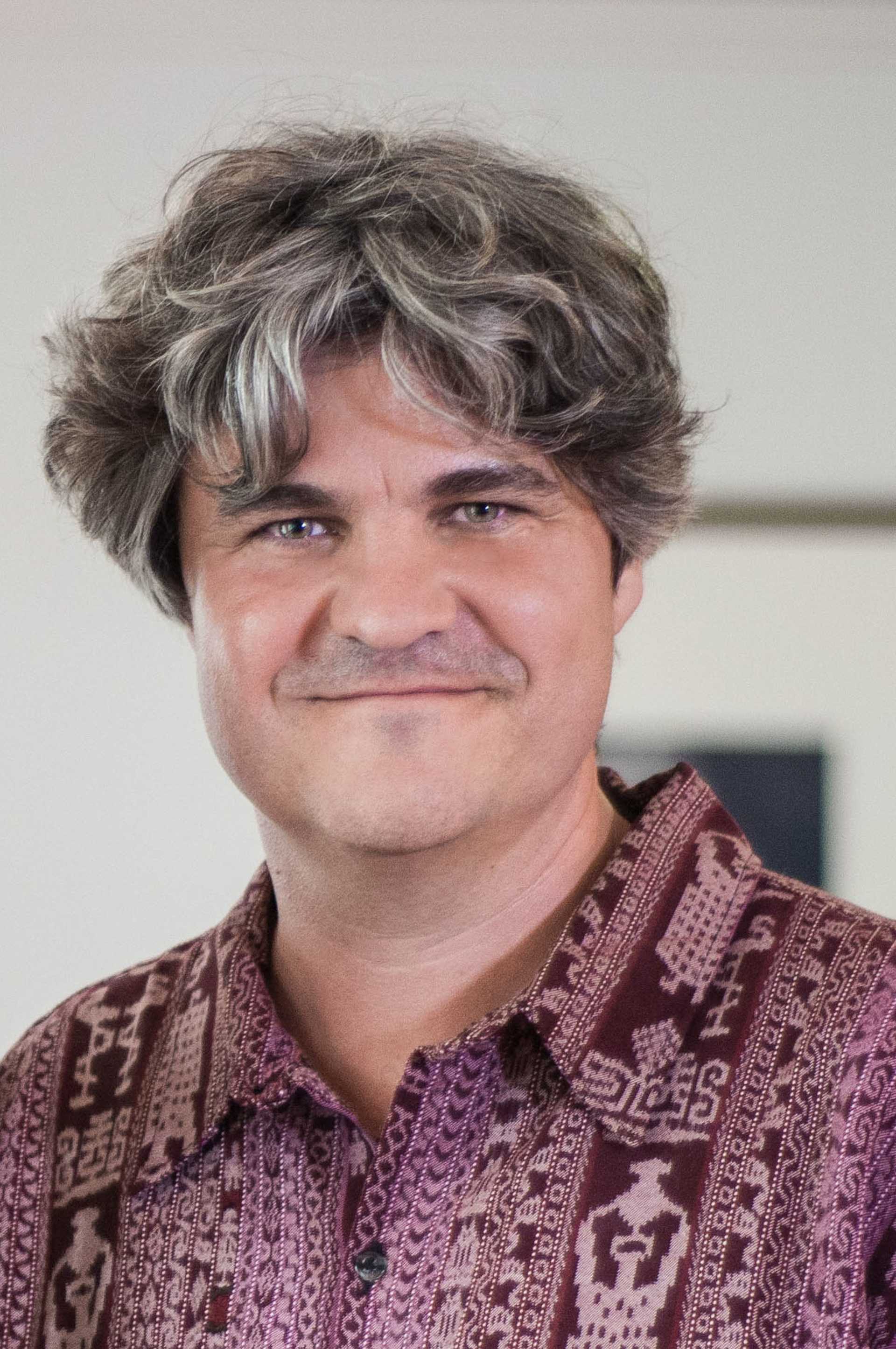The Europasinfonie: A Concert for a Continent
An interview with Markus Rindt, Artistic Director at the Dresdner Sinfoniker.
July 27, 2023

Himmel über Prohlis - music in times of the pandemic. The Dresdner Sinfoniker go beyond the boundaries of the classical concert hall and bring contemporary music to the roof of a tower-building © Daavid Sünderhauf
Project description
Europasinfonie
Allianz Foundation: Mr. Rindt, the Europasinfonie brings together musicians from various European orchestras and countries virtually so that they form one ensemble. Where did you get the idea for this project?
Markus Rindt: From the very beginning, artists from many countries have been coming together to collaborate on the Dresdner Sinfoniker’s various projects. International cooperation between musicians and composers expands their horizons and unites the most diverse personal experiences, cultural influences and ways of thinking. I’d say that working this way has had an enormous impact on our artistic development, as it has enabled us to repeatedly enter uncharted waters – artistically as well as technologically. As part of the Europasinfonie project, we want to let Europeans “speak to one another” for one evening using the latest technology. This idea of connecting underlies many of our projects, but especially that of the Europasinfonie. Besides, it’s a sign of the times that the cultural sector is cutting back on resources as well. The Europasinfonie keeps air travel to a minimum, as it contributes to climate change.
Allianz Foundation: You use sophisticated digital technology to enable the musicians from all the participating countries to make music together. How does this influence the artistic process?
Markus Rindt: The Dresdner Sinfoniker’s concert projects had already made use of multimedia elements early on. In the world’s first concert involving remote conducting, for example, conductor Michael Helmrath stood on the banks of the Thames and, via satellite transmission, conducted the orchestra in the concert hall in Dresden. We are interested in how music is perceived. To what extent can a reality that takes place hundreds of kilometers away be present? Of course, artistic ideas have to take into account the technical parameters and possibilities. There are slight delays in every transmission, even if they’re only small. But it is possible to work with these apparent limitations, as technology inspires new, surprising artistic solutions. Everything we do is an experiment that helps ask new questions.
Allianz Foundation: With the Europasinfonie you are making a clear political statement. Can music help to shore up European unity and counteract divisions?
Markus Rindt: Absolutely! The Europasinfonie brings together the greatest variety of groups: European artists, their audiences as well as public and private institutions. Beyond that, we want to act sustainably and develop a long-term infrastructure for an internet-based collaboration. The project will be called the European Musicians Hub, a platform that does not yet exist in this form. But there is an enormous demand. Musicians can use it to rehearse together digitally across Europe, produce music in a virtual studio, and realize completely new concert formats for a wide variety of artistic genres and target groups. We at the Dresdner Sinfoniker, which is committed to contemporary music, consider it important to break down barriers and enable many people to access culture. The Europasinfonie is an important effort toward transporting the arts deep into European societies, as it lets people discuss and even argue about new music. This is tremendously important at a time when many social groups no longer even talk to each other. Every real dialog that happens now helps strengthen democracies.

Markus Rindt is Artistic Director of the Dresdner Sinfoniker. He studied horn in Dresden and Cologne. His first engagement as a solo hornist led him to the Landesbühnen Sachsen (Saxony State Theater). In 1996, Rindt co-founded the Dresdner Sinfoniker with the musician and composer Sven Helbig. Rindt has been the driving force behind the Hochhaussinfonie, the World’s First Remote Conducting concert, the Concert at the End of Time, aghet — ağıt on the 100th anniversary of the Armenian genocide, and TEAR DOWN THIS WALL! On the border between Mexico and the USA.
